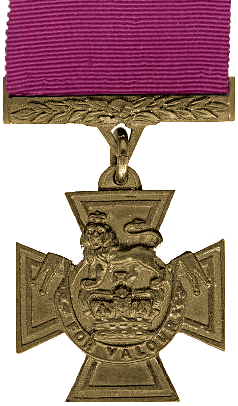John Harold Rhodes facts for kids
Quick facts for kids
John Harold Rhodes
|
|
|---|---|
 |
|
| Born | 17 May 1891 Stoke-on-Trent, Staffordshire, England |
| Died | 27 November 1917 (aged 26) Fontaine-Notre-Dame, France |
| Place of burial |
Rocquigny-Equancourt Road British Cemetery, Manancourt
|
| Allegiance | |
| Service/ |
|
| Years of service | 1910–1913 1914–1917 † |
| Rank | Lance Sergeant |
| Service number | 15122 |
| Unit | Grenadier Guards |
| Battles/wars | World War I |
| Awards | Victoria Cross Distinguished Conduct Medal & Bar |
Lance Sergeant John Harold Rhodes was a very brave British Army soldier. He received the Victoria Cross (VC), which is the highest award for bravery in the face of the enemy for British and Commonwealth forces. He also earned the Distinguished Conduct Medal (DCM) and a Bar to it, showing his repeated courage.
Contents
Who Was John Harold Rhodes?
John Harold Rhodes was born on May 17, 1891, in Packmoor, a village in Stoke-on-Trent, Staffordshire, England. His father was a miner and also a former soldier. John went to school in Newchapel and later worked as a miner at the Chatterley Whitfield Colliery.
Early Life and Joining the Army
Around 1910, when he was about 19 years old, John decided to join the Grenadier Guards. This is a famous part of the British Army. He served for three years. After his service, he returned to his job as a miner.
Fighting in World War I
When World War I began in 1914, John was called back to serve in the army as a reservist. He was 26 years old and held the rank of Lance-Sergeant in the 3rd Battalion of the Grenadier Guards.
John showed great bravery early in the war. He was awarded the Distinguished Conduct Medal on May 17, 1915. Just three months later, he earned a bar for this medal, meaning he had performed another act of bravery that deserved the same award. While he was back in England recovering from injuries, John married Lizzie. Sadly, he would not live to see their son, who was also named John. This son later became an artilleryman in World War II and also received an award for his bravery.
A Brave Act: The Victoria Cross
John returned to the front lines. His most famous act of bravery happened during the Battle of Poelcapelle. He was in charge of a Lewis gun section, which was a team using a type of machine gun. Their job was to protect their company as they made their position stronger.
John fought bravely, using both his rifle and the Lewis gun to stop several enemy soldiers. Then, he saw three enemy soldiers leaving a "pill-box." A pill-box was a small, strong concrete bunker used for defense. Without hesitation, John went forward alone. He moved through his own side's artillery fire and the enemy's machine-gun fire. He managed to get inside the pill-box.
Inside, he captured nine enemy soldiers! One of them was an officer who was connected by telephone to his artillery battery. John brought all these prisoners back with him. He also brought back important information that helped his side. For this amazing act of courage, John was awarded the Victoria Cross. He also received the French award, the Croix De Guerre.
John Harold Rhodes was killed in action at Fontaine-Notre-Dame, France, on November 27, 1917. He was buried at the Rocquigny-Equancourt Road British Cemetery in Manancourt.
Remembering a Hero
John Harold Rhodes's Victoria Cross medal is now on display. You can see it at The Guards Regimental Headquarters (Grenadier Guards RHQ) in Wellington Barracks, London, England.
People have also created memorials to remember him. A special plaque was put up at the Chatterley Whitfield Mining Museum on April 20, 1984. There is also a road named after John in nearby Tunstall. In his home village of Packmoor, a memorial was unveiled in 2000 on the Millennium Green outside Packmoor School.

